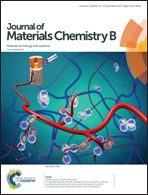Attenuation of thrombin-mediated fibrin formation via changes in fibrinogen conformation induced by reaction with S-nitroso-N-acetylpenicillamine, but not S-nitrosoglutathione
Abstract
Previous work using a 4 h rabbit thrombogenicity model has shown that a nitric oxide (NO)-generating polymer extracorporeal circuit (ECC) with infusion of S-nitroso-N-acetyl-penicillamine (SNAP) preserved platelets even though platelets were activated, as shown by an increase in the glycoprotein p-selectin. The platelet preservation mechanism was shown to be due to a changing fibrinogen structure leading to attenuation of platelet aggregation. To understand the effects that SNAP, another RSNO, S-nitroso-glutathione (GSNO), as well as the non-RSNO, sodium nitroprusside (SNP), may have on human fibrinogen polymerization, this in vitro study evaluated the effects of released NO on thrombin-mediated fibrin formation and fibrinogen structure. Thrombin-induced fibrin formation at 300 μM SNAP (50 + 11% of baseline) was significantly reduced compared to SNAP's parent, N-acetyl-penicillamine (NAP), (95 ± 13%) after 1 h of RSNO exposure. GSNO, its parent, glutathione (GSH), and 1000 ppm NO gas did not attenuate the thrombin-mediated fibrin formation. SNAP, NAP and SNP exposure for 1 h, however, did not decrease thrombin activity by directly inhibiting thrombin itself. Changes in fibrinogen conformation as measured by intrinsic tryptophan fluorescence significantly decreased in the 300 μM SNAP (38 057 ± 1196 mean fluorescence intensity (MFI)) and SNP (368 617 ± 541 MFI) groups versus the NAP control (47 937 ± 1196 MFI). However, infused 1000 ppm NO gas had no direct effect on the ITF after 1 h of incubation at 37 °C. High performance liquid chromatography (HPLC) showed that fibrinogen degradation by 0.03 U ml−1 thrombin was concentration-dependently reduced after 1 h with SNAP but not with NAP or SNP. Western blotting analysis was done on the RSNOs, SNAP and NAP, and the non-RSNO, SNP, incubated fibrinogen solutions and the results showed that the percent level of the Aγ dimer with respect to total Aγ dimer + γ monomer was significantly reduced in the case of the SNAP group when compared to the SNP group. These results suggest that NO donors such as SNAP and SNP induce fibrinogen conformational changes by potentially nitrosating fibrinogen tyrosine residues. These NO-mediated fibrinogen changes induced via NO donors may provide another mechanism of NO for improving thromboresistance in ECCs.



 Please wait while we load your content...
Please wait while we load your content...